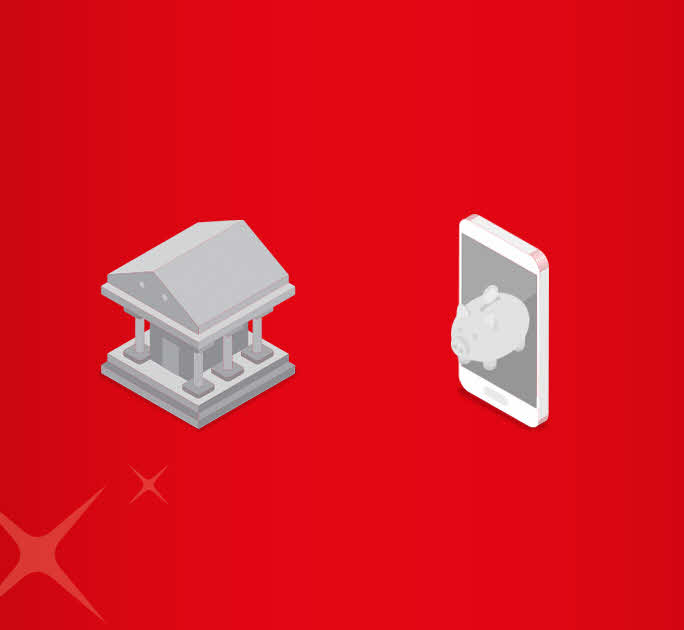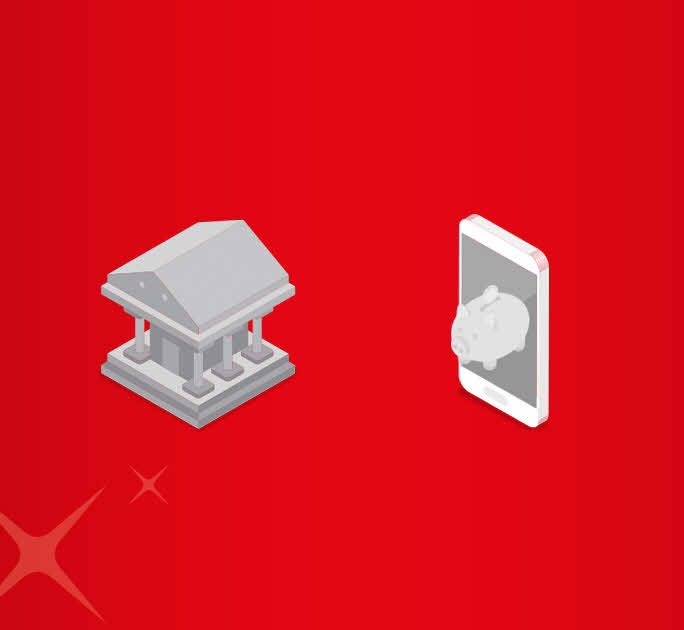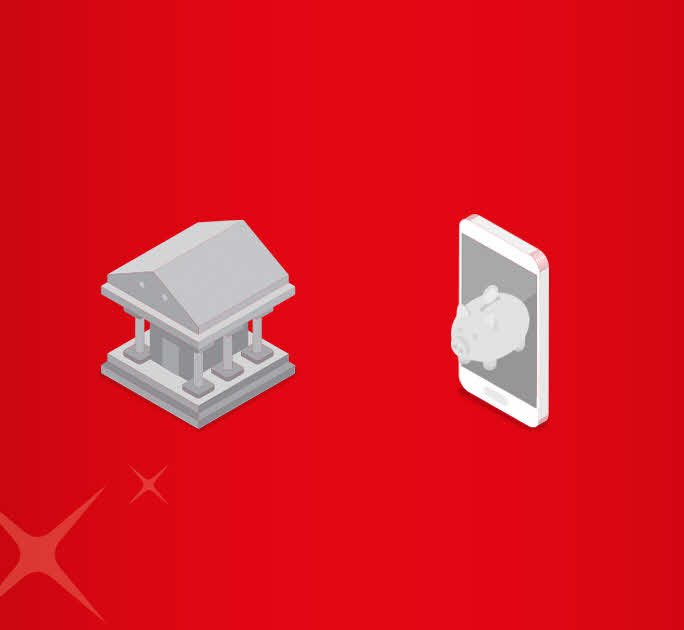- Save
- Invest
- Borrow
- Pay
- More
- Customer Services

What is NEFT and How does it Work?
Key Takeaways
- Through NEFT, you can initiate domestic fund transfers at any time.
- You can conduct NEFT transactions online and offline.
- There is no transaction limit; however, banks may impose a limit.
- NEFT can be used to pay credit card bills, loans, EMIs, and more.
- Online NEFT transactions are free of charge.
What is NEFT?
The NEFT full form is National Electronic Funds Transfer. It is a mode of money transfer that enables one-to-one payments within India. NEFT is owned, operated, and developed by the country’s central bank and regulatory body - The Reserve Bank of India. Through this facility, you can transfer money from one account to another. You may initiate transfers between two bank accounts you own or from your account to others’ accounts in different banks. However, you can make this type of transaction only if your bank is NEFT-enabled.
How does NEFT work?
NEFT money transfers are a secure, efficient, and reliable method of domestic fund movement within India. For those unfamiliar with what an NEFT transfer involves, the process begins with registering the beneficiary by providing their name, contact information, bank name, branch, account number, and IFSC code. This registration generally takes about five minutes, and the transfer can be initiated after a 30-minute activation period. Once processed, the beneficiary typically receives the funds within a few minutes to a few hours.
How to Initiate an NEFT Transaction?
To send money using an NEFT transfer, you can use internet banking or your bank’s mobile application. The steps are:
- Log in to your internet banking account on a computer or mobile device.
- Go to the ‘Fund Transfer’ section and choose ‘NEFT’.
- Add or select a beneficiary. You will need the account number, bank name, branch, IFSC code, name, and mobile number. If you add a new beneficiary, most banks require a 30-minute wait before you can make a transfer.
- Check that the beneficiary’s details are correct.
- Enter the One-Time Password (OTP) sent to your registered mobile number to confirm the payment.
- You and the beneficiary will both get an SMS once the transfer is completed.
Banks may apply NEFT charges depending on their fee structure, though some offer free transactions through digital channels. If you make transfers often, You can open a savings account with DBS Bank to manage fund transfers efficiently and earn interest on your balance.
What is Required for a NEFT Money Transfer?
To carry out an NEFT money transfer, certain details and documents are needed to ensure the payment is processed without issues.
You will typically require:
- Bank Account: An active savings or current account with internet banking access.
- Beneficiary Details: The recipient’s name, bank account number, bank name, branch, and IFSC code.
- Registered Mobile Number: For receiving the One-Time Password (OTP) and transaction alerts.
- Sufficient Funds: Your account balance should cover the transfer amount and any applicable charges.
It is also helpful to be aware of the NEFT transaction time, as requests are processed in scheduled batches during operational hours.
Having these in place ensures your transfer is completed promptly and without unnecessary delays.
NEFT Transaction Timings
Earlier, when RBI introduced NEFT, there were time slots for clearance. However, the RBI changed the rules in December 2019, and you can now transfer money using NEFT - 24/7, throughout the year, including bank and public holidays.
Banks clear funds transferred through NEFT on a half-hour basis, which means the receiver will get the funds after half an hour from the time you initiate the transaction.
NEFT Transfer Limit
RBI has not imposed any upper or lower limit for fund transfers through NEFT. However, banks could set their own upper limits on daily transaction limits. It is advisable to check with your bank for details on any restrictions or limits applicable to NEFT transactions.
NEFT Charges and Fees
There are no charges for NEFT transactions done via internet banking or mobile banking apps. However, if you choose to conduct NEFT transactions at bank branches, your bank may levy a nominal charge based on the transfer amount.
Download digibank by DBS to send money to your loved ones with ease and complete confidence.
NEFT vs RTGS – What’s the Difference?
NEFT (National Electronic Funds Transfer) and RTGS (Real-Time Gross Settlement) are two widely used methods for transferring funds between bank accounts in India. An NEFT money transfer is processed in batches, while RTGS transactions are settled in real time, leading to differences in speed, transaction size, and usage.
|
Aspect |
NEFT (National Electronic Funds Transfer) |
RTGS (Real-Time Gross Settlement) |
|
Processing Method |
Transactions processed in half-hourly batches |
Transactions settled instantly in real time |
|
Minimum and Maximum Limits |
No minimum amount; NEFT limit depends on bank policy |
Minimum transfer amount of ₹2 lakh; no maximum limit |
|
Use Cases |
Suitable for routine payments and smaller transfers |
Ideal for large-value or urgent transactions |
|
Availability |
Available 24×7 through online and mobile banking |
Available 24×7 through online and mobile banking |
If you regularly use NEFT or RTGS, it may be worth exploring the highest interest rate savings account to grow your balance while maintaining easy access for transfers.
Reasons for NEFT Failure
Understanding what NEFT transaction is, and its process can help you identify why a payment might fail. Common reasons include:
- Incorrect Beneficiary Details: Mistakes in the account number, IFSC code, or beneficiary name can cause rejection.
- Insufficient Account Balance: If the sender’s account does not have enough funds, the NEFT transfer will not be processed.
- Technical Issues: Connectivity or server problems at either bank can delay or block the transaction.
- Inactive or Closed Account: NEFT money transfers to dormant or closed accounts are automatically reversed.
- Exceeding Transaction Limits: Some banks have daily or per-transaction NEFT limits and exceeding them can lead to failure.
Most failed transactions are reversed within a few working days. If you are planning to open bank account, it is worth choosing a bank that offers reliable NEFT services to minimise the risk of such issues.
Is NEFT Available for International Transfers?
NEFT (National Electronic Funds Transfer) is primarily intended for domestic fund transfers within India. The system, managed by the RBI, ensures secure processing between NEFT-enabled banks across the country.
The only exception is under the Indo-Nepal Remittance Facility Scheme, which permits one-way NEFT transfer from India to Nepal. These transactions are settled in Indian Rupees and converted into Nepalese Rupees for the beneficiary. A recipient in Nepal does not need to hold a bank account, as cash disbursement is possible through authorised partner outlets.
When using this service, it is important to be aware of the applicable NEFT charges, the maximum NEFT limit permitted by your bank, and the standard NEFT transaction time, which may vary depending on processing schedules.
If you are choosing a bank for NEFT services, consider one that also offers competitive savings account interest. For instance, DBS Bank provides a savings account with interest rates of up to 5.5% per annum, combining attractive returns with convenient access to NEFT money transfer facilities, including the Nepal-specific arrangement.
Benefits and Advantages of Using NEFT
Now that it is clear what NEFT means let us look at some of its advantages.
- Wide Reach: Transfer funds between accounts at any NEFT-enabled bank within India.
- 24/7 Availability: NEFT is accessible at any time, all year round, including holidays.
- Fast Transfers: Funds are securely transferred within half an hour.
- Transaction Confirmation: Receive SMS and email confirmations for your transactions.
- Zero Online Charges: Online NEFT transactions incur no fees.
- Paperless Transactions: No need for cheques or demand drafts.
- Convenience: Send money without visiting a bank branch.
- Versatility: Pay credit card bills, loans, EMIs, and utility bills via NEFT.
Conclusion
NEFT remains one of the most accessible and secure methods for transferring funds in India. By understanding what NEFT transaction is, the process involved, and common reasons for failures, individuals can use it more effectively. Whether you are making a one-time payment or handling frequent transfers. Choose to open a bank account with DBS Bank offering interest rates up to 5.5% p.a.










